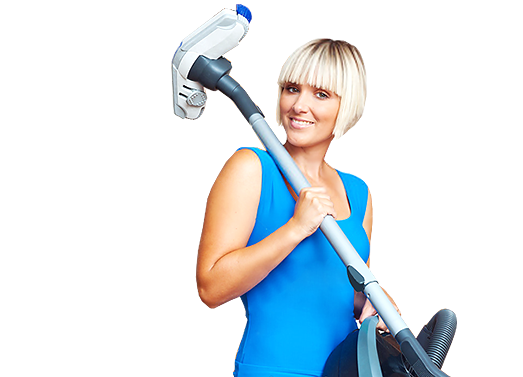Navigating leather care with steam cleaning techniques
Posted on 06/06/2025
Navigating Leather Care with Steam Cleaning Techniques: Your Comprehensive Guide
Leather is a timeless material known for its durability, elegant appearance, and luxurious feel. However, maintaining its beauty and longevity requires proper care. Among the innovative methods available today, steam cleaning techniques offer a modern and effective solution to keep leather looking its best. In this article, we explore how to expertly navigate leather care with steam cleaning methods, ensuring your leather surfaces remain pristine for years to come.

Understanding Leather and Its Unique Care Needs
Leather is a natural, porous material derived from animal hide, esteemed for its supremely rich texture and resilience. Unlike synthetic fabrics, leather requires specialized attention due to its distinctive characteristics. To maintain its integrity and appearance, it's vital to use appropriate care techniques and avoid harsh substances.
The Challenges of Traditional Leather Cleaning
- *Effort-Intensive:* Conventional leather cleaning often involves manual scrubbing and specific detergents, which can be time-consuming and physically demanding.
- *Variable Results:* Some cleaning products may contain chemicals that damage the leather, leading to discoloration or dryness.
- *Incomplete Cleansing:* Deep-seated dirt and oils frequently remain embedded within the grain, evading standard cleaning approaches.
These issues reveal the need for an alternative that's both gentle and thorough -- a demand that steam cleaning for leather can expertly fulfill.
Introducing Steam Cleaning Techniques for Leather
Steam cleaning utilizes vaporized water to penetrate surfaces and dislodge dirt, bacteria, and oils. When appropriately applied to leather care, steam cleaning offers several unrivaled benefits:
- Gentle Penetration: Steam provides deep cleansing without saturating or damaging the leather's natural fibers.
- Sanitization: High-temperature steam eradicates bacteria, mites, and allergens, fostering a healthier environment.
- Eco-Friendly: Steam cleaning often requires just water, minimizing the need for chemical-laden products.
However, while the advantages are considerable, mastering the right steam cleaning techniques is essential to avoid inadvertently harming your leather possessions.
How Does Steam Cleaning Work on Leather?
Steam cleaning involves several carefully choreographed steps:
- Heating water to create hot vapor (usually above 100?C/212?F).
- Directing the steam through a nozzle or attachment onto the leather surface.
- Loosening and lifting dirt, oils, and contaminants from the leather's pores.
Yet, leather's unique constitution demands a cautious approach. Excessive moisture or overheating may cause irreversible deformities, including warping, brittleness, or color fading. Therefore, understanding the type of leather and selecting appropriate steam cleaning settings is paramount.
Main Types of Leather and Their Compatibility with Steam Cleaning
- Finished Leather - Features a protective coating and is generally more receptive to gentle steam cleaning.
- Unfinished (Aniline) Leather - More absorbent and sensitive. Should be steam cleaned with heightened caution or preferably spot-cleaned.
- Suede and Nubuck - Due to their softness and open pores, these should never be directly steam cleaned.
Proper Steam Cleaning Techniques for Leather Care
The following step-by-step protocol ensures effective and safe leather care using steam cleaning:
1. Prepping the Leather Surface
- Remove loose dirt and debris with a soft-bristled brush or microfiber cloth.
- If necessary, perform a patch test on a discreet area to verify colorfastness and resilience to steam.
2. Selecting the Right Steam Cleaner and Attachments
- Choose a steam cleaner with variable steam control to adjust intensity.
- Utilize a fabric or upholstery attachment to disperse steam gently and evenly.
3. Applying Steam to Leather
- Keep the nozzle moving and avoid direct contact -- maintain a 1-2 inch distance from the surface.
- Steam in small sections at a time, swiftly wiping away loosened dirt with a clean, lint-free cloth.
- Do not linger on one area to prevent moisture overload and surface damage.
4. Post-Cleaning Drying and Conditioning
- Allow the leather item to air dry naturally, away from direct heat or sunlight.
- Once dry, apply a nourishing leather conditioner to replenish lost oils and promote restored suppleness.
Expert Tips to Maximize Results When Steam Cleaning Leather
Enhance your leather cleaning with steam techniques by incorporating these expert suggestions:
- Avoid Over-Saturation: Steam lightly to prevent water from seeping deeply into the hide.
- Consistent Movement: Keep the cleaner moving at all times for uniform results.
- Quality Cloths: Use microfiber or soft cotton to avoid abrasions during the wipe-down process.
- Routine Maintenance: Schedule steam cleanings quarterly, supplemented by regular dry wiping, to minimize deep soiling.
- Condition After Every Steam Cleaning: Steaming may open the pores and remove natural oils, necessitating an immediate conditioner application.
Benefits of Navigating Leather Care with Steam Cleaning Techniques
Why Choose Steam Cleaning for Leather?
- Gentle Yet Effective Cleaning: Removes persistent stains and dirt without harsh scrubbing or abrasive chemicals.
- Healthier Spaces: Steam kills dust mites and microbes, contributing to better indoor air quality - especially valuable for allergy sufferers.
- Prolongs Leather Life: Regular, gentle cleaning prevents buildup that can degrade the surface and extends the life of leather goods.
- Minimal Residue: Leaves no sticky films or chemical residues behind.
By mastering leather care with steam cleaning, you preserve both the functionality and the aesthetic appeal of your cherished leather items.
FAQs: Steam Cleaning Leather Explained
Is Steam Cleaning Safe for All Types of Leather?
No. As highlighted above, finished leather generally tolerates steam cleaning, but unfinished, suede, and nubuck are sensitive. Always read manufacturer recommendations.
How Often Should I Steam Clean My Leather Furniture or Car Seats?
Generally, a deep steam clean every 3-6 months is sufficient. Excess cleaning may strip natural oils. Routinely remove dust and use appropriate conditioners between steam sessions.
Can I Use a Regular Steam Mop on Leather?
No. Steam mops designed for hard floors emit too much moisture and heat. Use a specialized steam cleaner with adjustable settings and upholstery attachments.
Do I Need to Condition Leather After Steam Cleaning?
Absolutely. Always replenish with a suitable leather conditioner to restore softness, flexibility, and sheen.
Common Mistakes to Avoid When Using Steam Cleaning on Leather
- Applying Steam Too Close or for Too Long: May cause blistering, shrinkage, and finish removal.
- Skipping the Patch Test: Especially risky with dyed or delicate leathers.
- Neglecting Post-Clean Conditioning: Results in tightly drawn, cracked, and dull leather.
- Using Hard Brushes or Abrasives: Damages the leather grain, causing visible scratches.
Professional vs. DIY Steam Cleaning Techniques for Leather
There's an ongoing debate between handling leather cleaning yourself and hiring a professional leather cleaning service.
Advantages of DIY Steam Cleaning
- Cost-Effective: Invest in a quality steam cleaner and care for multiple items over time.
- Convenient: Address minor spills and stains immediately without waiting for appointments.
When to Call a Professional?
- Extremely Valuable or Antique Leather: Professionals use specialized equipment and techniques for priceless or fragile pieces.
- Severe Staining or Odor: Persistent mold, ink, or bodily fluids may require industrial-grade solutions.

Eco-Friendly and Health Perspectives
One of the compelling aspects of navigating leather care with steam cleaning techniques is its environmental and health benefits:
- Reduced Chemical Exposure: Families can maintain a safer environment by avoiding caustic chemicals and commercial solvents.
- Less Water Waste: Steam cleaning uses far less water than traditional washing methods.
- Hypoallergenic Results: Steam's sanitizing power helps reduce allergens and contaminants.
Conclusion: Master Leather Care with Steam Cleaning Techniques
Leather remains one of the most exquisite and enduring materials, but it requires thoughtful upkeep to retain its splendor and resilience. Steam cleaning techniques, when practiced diligently and knowledgeably, offer a gentle, effective solution that exceeds many traditional cleaning methods.
By carefully navigating how you apply leather steam cleaning techniques, understanding your specific type of leather, and marrying these methods with post-clean conditioning, you can preserve the beauty and longevity of your favorite leather furnishings, apparel, and accessories. Incorporate steam cleaning into your regular maintenance routine to enjoy cleaner, healthier, and more radiant leather for years to come.
- Always use the right equipment and test on inconspicuous spots first.
- Nourish your leather after every steam cleaning session.
- When in doubt, consult a professional for delicate or high-value pieces.
With the right approach, navigating leather care with steam cleaning techniques transforms the daunting task of upkeep into a seamless, eco-friendly, and restorative ritual.




